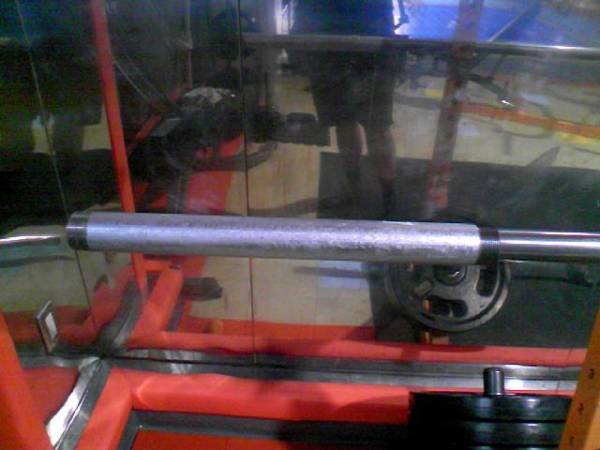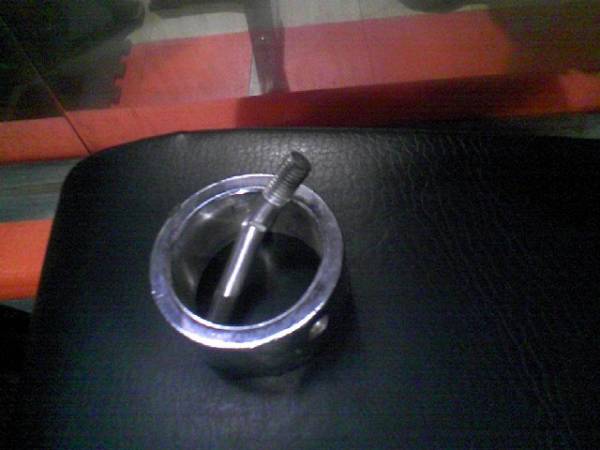There have been plenty of challenges living for the past six years as an American in Japan. First of all, finding shoes my size is a challenge at best and damn near impossible at worst. Finding t-shirts that don’t choke me while not simultaneously being covered in non-sensical (or at least grammatically incorrect) English is another. And let’s not even get into trying to find a decent steak.
There have been plenty of challenges living for the past six years as an American in Japan. First of all, finding shoes my size is a challenge at best and damn near impossible at worst. Finding t-shirts that don’t choke me while not simultaneously being covered in non-sensical (or at least grammatically incorrect) English is another. And let’s not even get into trying to find a decent steak.
But I digress, this article is about do-it-yourself (DIY) beast mode gear. Almost a year ago, I started my own gym in my town, and am the proud owner of one of the few Olympic-style weight sets in the entire town (including the three largest commercial gyms).
When shopping, however, prices reared their ugly heads. Weight sets that would have cost about 600 dollars in the United States were running 100,000 yen here in Japan (about a thousand American dollars) – before shipping! I spent the most I could afford and got the best set I could. Hey, heavy lifters are rare in Japan, and even more rare in the countryside. Almost everything has to be imported, and prices are at a premium.
Fast forward to last month, and I was working my squats. I was very happy to hit a personal best (post ACL surgery) of 210 kilograms (about 463 pounds) when I noticed that my bar, while not failing, had what I would call an excessive amount of “flex” in it.
Since this was my one and only bar for the gym, tearing the damn thing in half would not be a good idea. So, I went back into my documentation on the weight set and checked my bar capacity.
Open up to the proper page, and read “Recommended Max Weight: 200 kilograms.” Ooooops. Now, what do I do? I want to go even heavier, but if I do, I might just shear off the ends of my bar. Time to buy a new bar it seemed.
Here, prices reared their ugly heads yet again. When I checked prices for a high capacity bar, the cheapest I could find was over 50,000 yen (500 USD). A good quality bar like an Ivanko bar was going to run over 100,000 yen (1000 USD).
To be quite honest, I just couldn’t afford the damned things. So, as a former military officer who did his fair share of “MSU Ops” (Making Sh** Up Operations), I decided to DIY my new bar.
The most important part, of course, is the heart of the bar, the core bar itself. After reading a series of highly informative (and quite often funny) articles by Dr. Ken Leistner (no stranger to the DIY iron game himself), I knew I wanted to get cold rolled steel. In stepped the helpful folks at Osaka Stainless Steel Company in Osaka, Japan.
Working with their representatives, we decided eventually on a 38mm diameter cold rolled hardened steel bar at 250cm in length (about 8 feet, so longer than your normal bar – it’s the one on top in the photo). And it was really a good price too, only about a hundred U.S. dollars, including delivery.
I went with the bigger diameter bar (38mm as opposed to the standard 28mm bar) for a few reasons. First off, while I knew the bar I was getting was cold-rolled, that was no guarantee it was as strong as the steel used in a high-quality commercial bar.
Those extra millimeters of steel could be useful. Second, the extra diameter could also be useful as a grip aid. While not a true fat bar in the 2-inch or higher category, let’s face it, that extra almost half-inch is still going to challenge the grip on deadlifts and other pulls.

So, I had my “heart,” now I needed the finishing touches. A quick trip to a local hardware store got me the pipes to go over the ends of my bar, a set of 50cm long 1.5in diameter water pipes.
With an inner diameter of 39mm and an outer diameter of 49mm, I couldn’t ask for a better fit if I had custom ordered the damn things.
Since this bar is meant for the power lifts and not Olympic lifts, I didn’t need bushings or bearings or anything else like that, I could affix the pipes to the bar directly with no rotation needed.
Using a series of high strength epoxies, I was able to fasten the pipes to the ends of the bar with no issues at all (while I would have loved to have welded them on, I have neither the skill nor the access to a welding set). Using an old set of screw-on collars to work as my inner collars and TA-DA! The BEAST is unleashed!

I can tell you, so far this thing is a rock on my back. Taking it out on squats was like having a dead straight laser line across my shoulders, even when fully loaded, and even when I tried to bounce the top of a few squats just to see if I could get the bar to flex at all. As an added bonus, the extra bar width even felt a bit more comfortable on my shoulders, dispersing the weight a bit wider on the back muscles.
So, don’t despair if you are in a similar situation. While I doubt few readers of this are going to find themselves in a non-English speaking foreign country that doesn’t have a large heavy lifting community, you might find yourself in a situation where your finances don’t quite match the prices of commercially available equipment, or shipping and other costs make do-it-yourself work useful and worthwhile.
If you do decide to take the DIY plunge, here are a few tips I would share with you:
- Shop around. I checked over a dozen different sources (online and via telephone) before I settled on the bar that I purchased.
- Research. Check the dimensions, thickness, and any other information you can on the commercially available products you are trying to emulate or template off of. Even if your build is unique due to your circumstances, find out as much info as you can.
- Overbuild. Unless you are a master metalworker or fabricator, or you know someone who is, your welds and materials may not be as fool-proof as the commercial stuff. Let’s face it, York, Ivanko, and the rest have stayed in business doing what they do because they build good stuff and they know how to put it together. You’re not that good (yet?). So, overbuild if you can. If the commercial-grade rack you want has box walls 2mm thick, get something 3mm thick if you can. If you need something that can handle 500 pounds, build something that can handle 750 pounds. It might be a bit more expensive (hey, I could have built the BEAST for about three-quarters of the price I did if I had copied commercial measurements exactly) but the extra safety factor helps me sleep better at night.
- Try it out. Put the thing through its paces, but do it slowly. Just because you might want to build something that can take up to 1000 pounds, don’t just slap 1000 pounds on the thing first time out. Take it up slowly, and see what it can do.
In any case, I hope this encourages you as well to try and do your own home made beast mode gear for your own needs.






